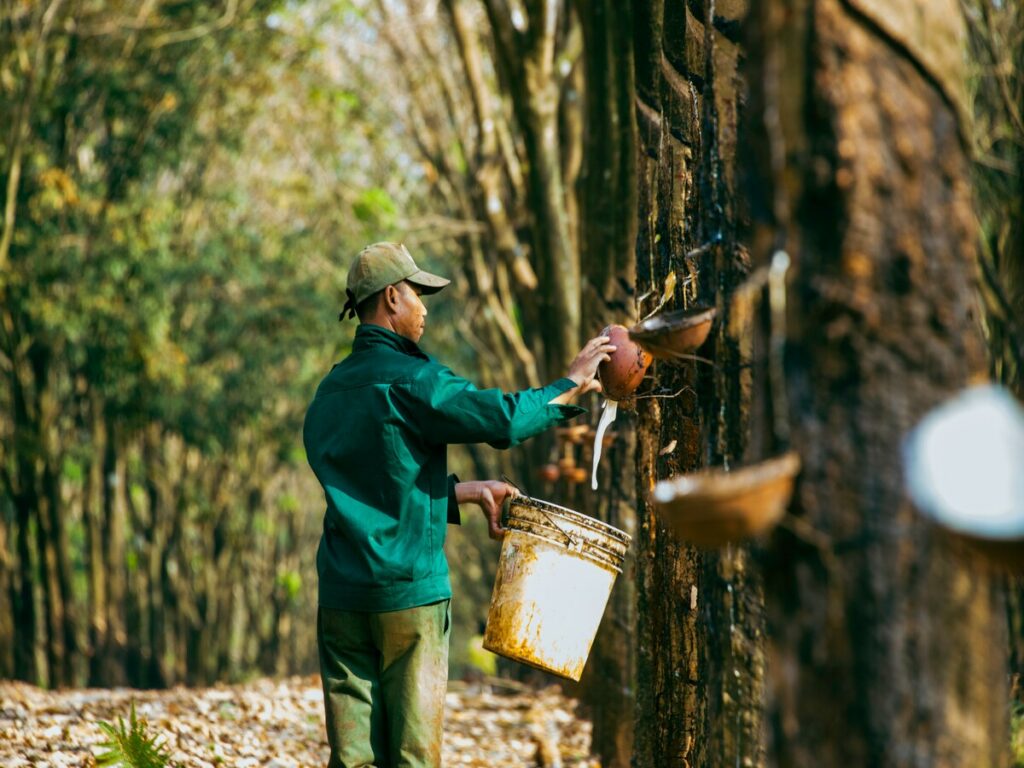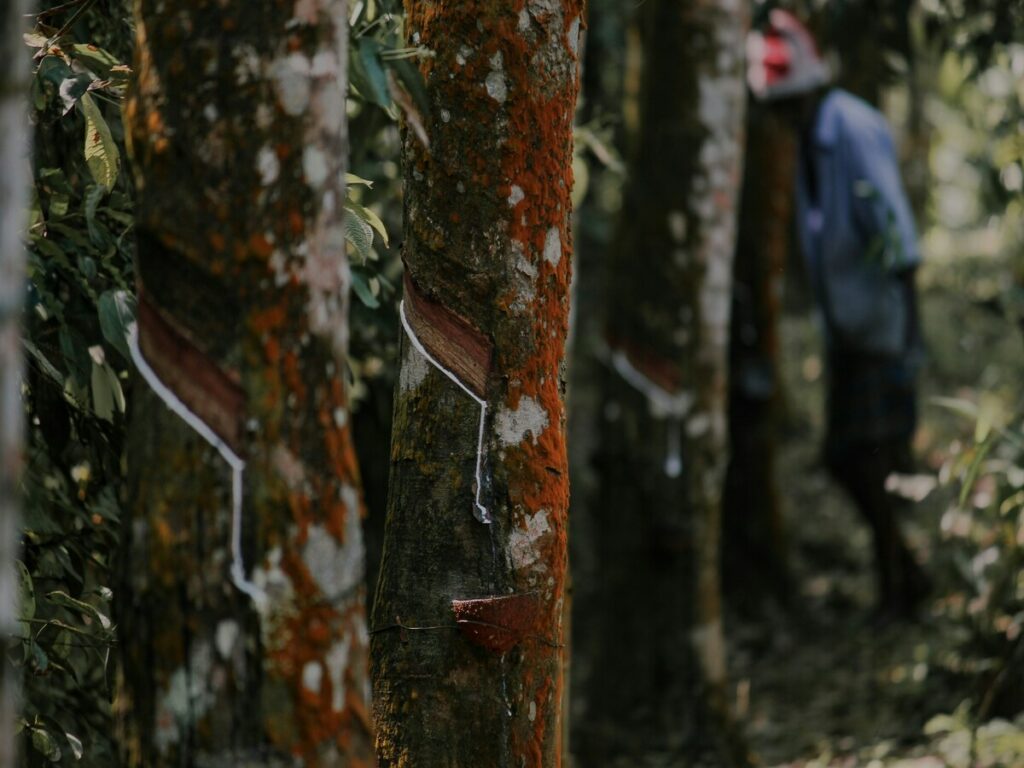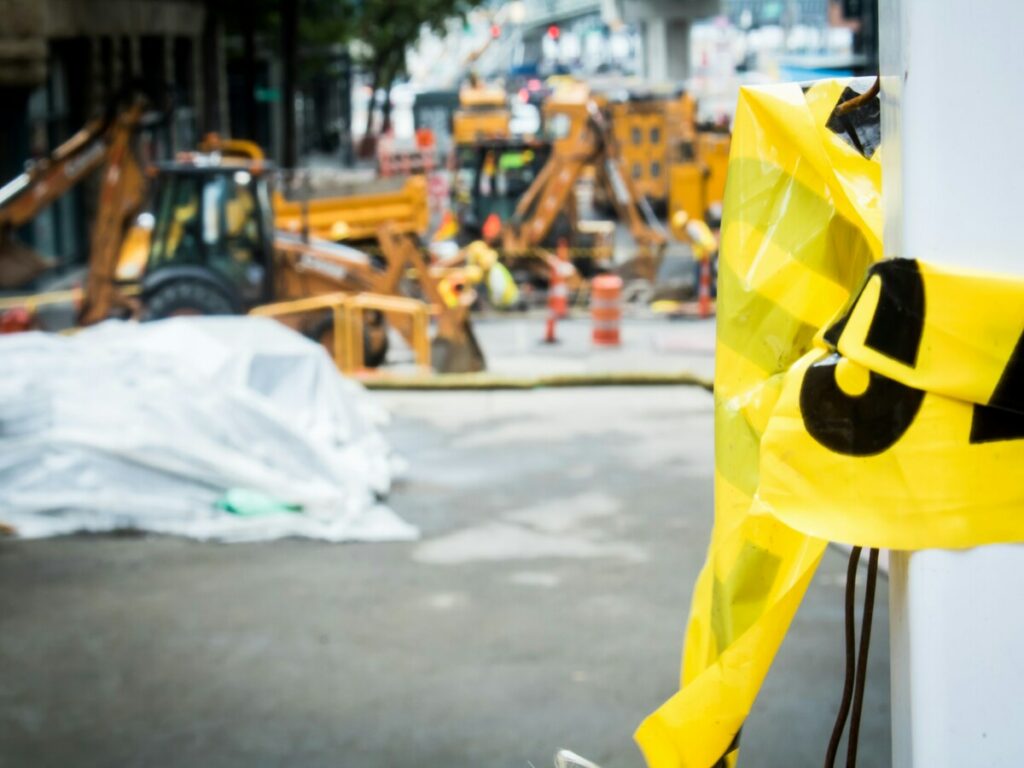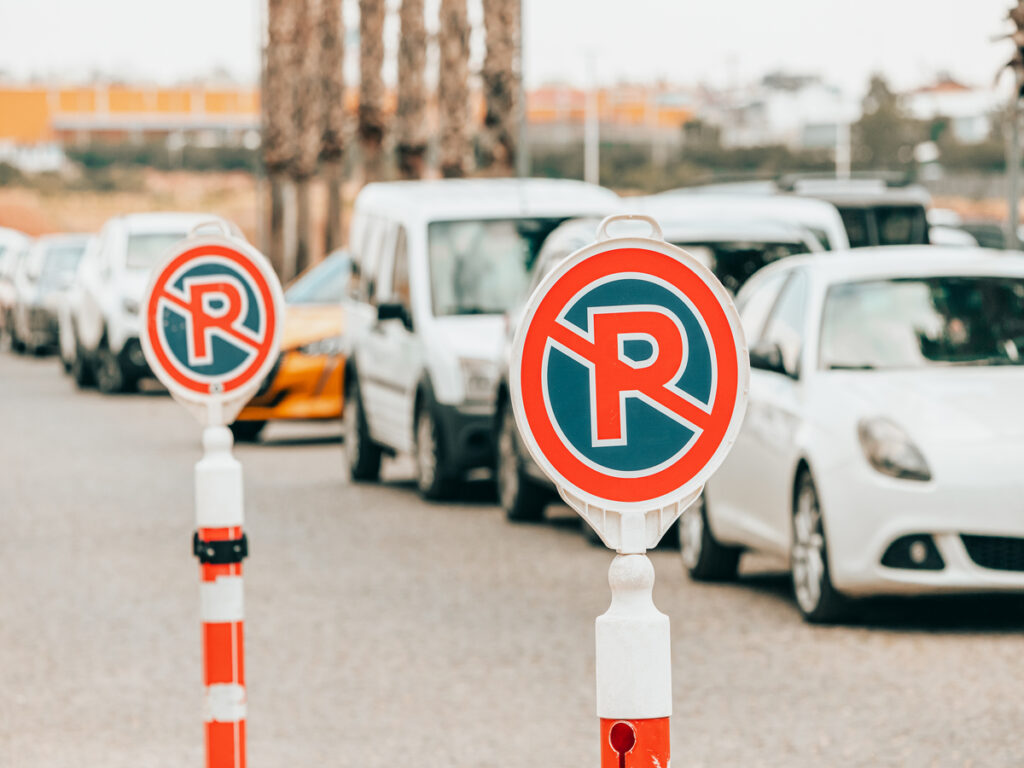
Каучуковые конусы безопасности представляют собой замечательную смесь природы и инноваций. Эти важные инструменты полагаются на два основных источника: натуральный каучук, получен из сока резиновых деревьев, и синтетический каучук, создан с помощью передовых промышленных процессов. Натуральный каучук, часто называют “Дерево жизни,” был жизненно важным ресурсом на протяжении веков. Синтетический каучук, разработан во время промышленной революции, расширил свои приложения. Вместе, Эти материалы составляют основу безопасного конуса, обеспечение долговечности и гибкости. Эта комбинация подчеркивает, как резина продолжает формировать современные решения безопасности.
История и происхождение резины
Резина имеет увлекательную историю, которая охватывает века, Смешивание естественного открытия с промышленными инновациями. Его путешествие от сырья к повседневному использованию отражает изобретательность человеческого прогресса.
Натуральный каучук: Дерево жизни

Натуральный каучук происходит от сока Hevea brassilensis дерево, Обычно известный как резиновое дерево. Коренные народы в Южной Америке впервые обнаружили свои уникальные свойства. Они использовали сок дерева для создания водонепроницаемых предметов, Признание его эластичности и устойчивости. Когда европейские исследователи столкнулись с этим материалом, Они познакомили это с остальным миром, Возникает широко распространенный интерес.
19 -й век ознаменовал поворотный момент для натурального каучука. В 1839, Чарльз Гудир революционизировал его удобство использования, обнаружив Вулканизация. Этот процесс включал нагревание резины с серной, сделать его более сильным и долговечным. Вулканизация превратила резину в универсальный материал, разжигание промышленного бума и расширение его применения в таких продуктах, как шины, шланги, и защитное оборудование.
«Резина - это дерево жизни,«Фраза часто используется для описания его важности, Подчеркивает, как этот природный ресурс поддерживает отрасли и сообщества по всему миру.
Синтетический каучук: Промышленная революция
Спрос на резину вырос в начале 20 -го века, Особенно во время Второй мировой войны. Однако, Доступ к натуральному каучуке стал ограниченным из -за геополитических конфликтов. Чтобы решить эту проблему, Химики работали неустанно, чтобы создать альтернативу. Их усилия привели к изобретению синтетического каучука, материал, изготовленный из нефтяных соединений.
В 1940, Соединенные Штаты установили Резиновая резервная компания (Rrc) Чтобы обеспечить стабильную подачу синтетического каучука. Эта инициатива гарантировала, что промышленность может продолжать производить основные товары, Даже когда натуральный каучук был скудным. Синтетический резин предлагал несколько преимуществ, включая устойчивость к экстремальным температурам и химическим веществам, сделать его идеальным для промышленного и военного применения.
Сегодня, Синтетический каучук дополняет натуральный каучук в бесчисленных продуктах, в том числе конусы безопасности, которые вы видите на дорогах и строительных площадках.
Глобальная цепочка поставок резины
Производство резины опирается на сложную глобальную цепочку поставок. Натуральный каучук в основном поступает из тропических регионов, таких как Юго -Восточная Азия, где такие страны, как Таиланд, Индонезия, и Малайзия доминирует в производстве. Фермеры собирают латекс с резиновых деревьев, который затем обрабатывается и экспортируется в производителей по всему миру.
Синтетический каучук, с другой стороны, зависит от нефтехимической промышленности. Страны с расширенными возможностями химического производства, такие как Соединенные Штаты, Германия, и Китай, играть важную роль в его производстве. Эти страны превращают сырую нефть в сырье, необходимое для производства синтетического каучука.
Глобальная цепочка поставок резины соединяет фермеров, химики, и производители, Обеспечение того, чтобы этот основной материал достигает промышленности по всему миру. Натуральный или синтетический, Резина продолжает формировать современную жизнь, от шин на вашем автомобиле до конусов безопасности, которые направляют вас на дороге.
От сырой резины до полезного материала
Обработка натурального каучука
Натуральный каучук начинает свое путешествие как латекс, молочная жидкость, собранная из Hevea brassilensis дерево. Фермеры собирают этот латекс, делая небольшие разрезы в коре, позволяя сосу течь в контейнеры. Однажды собрался, Латекс предпринимает несколько шагов, чтобы преобразовать его в пригодный для использования материал.
Первый, Латекс фильтруется для удаления примесей. Затем, он смешан с кислотами для коагуляции, или затвердеть, резиновые частицы. Эта коагулированная резина прижимается в листы и сушена, Часто используя дым или тепло. Эти простыни, известная как сырая резина, затем отправляются производителям по всему миру. Процесс гарантирует, что резина сохраняет свою эластичность и прочность, сделать его подходящим для различных приложений, в том числе конусы безопасности.
Производство синтетического каучука
Синтетический резина следует по другому пути. Химики создают его в лабораториях, используя нефтяные соединения. Процесс начинается с уточнения сырой нефти для извлечения мономеров, таких как бутадиен и Стирол. Эти мономеры подвергаются полимеризации, химическая реакция, которая связывает их в длинные цепи, Формирование синтетического каучука.
В отличие от натурального каучука, синтетический резин может быть адаптирован к конкретным потребностям. Например, Производители могут регулировать свое сопротивление на тепло, химикаты, или носить. Эта настройка делает синтетический каучук идеальным для промышленного использования, такие как дорожные конусы, где долговечность и гибкость имеют решающее значение. Способность производить синтетический каучук по требованию также обеспечивает постоянное предложение, Независимо от доступности натурального каучука.
Вулканизация: Укрепление резины для долговечности
Натуральный или синтетический, Сырая резина требует вулканизации для достижения полного потенциала. Вулканизация включает в себя нагрев резины с помощью серы или других отверждений.. Этот процесс создает прочные химические связи между молекулами резины, формирование Трехмерная матрица. Результатом является материал, который не только сильнее, но и более эластичный и устойчивый к износу.
Для конусов безопасности, Вулканизация гарантирует, что они могут терпеть суровую погоду, тяжелые воздействия, и постоянное использование. Усиленная прочность и гибкость, обеспечиваемые вулканизацией, делают резину идеальным выбором для этих важных инструментов.
ОПТзнаки Конусы безопасности резины спроектированы для долговечности и надежности, Сделать их идеальным выбором для широкого спектра приложений управления трафиком.
Почему резина является идеальным материалом для дорожных конусов

Дорожные конусы играть решающую роль в обеспечении безопасности и порядка в различных средах. Резина выделяется как идеальный материал для этих дорожных шишек из -за его уникальных свойств и способности соответствовать высоким стандартам безопасности. Давайте рассмотрим, почему резиновые дорожки преуспевают в производительности и надежности.
Ключевые свойства резины
Резина предлагает комбинацию прочности, Гибкость, и долговечность, которая делает его идеальным для дорожных конусов. В отличие от других материалов, резиновые шишки тяжелее, что помогает им оставаться в вертикальном положении даже в сложных условиях. Высокие ветры или случайные неровности не будут легко их опрокинуть, гарантируя, что они остаются на месте, чтобы эффективно направлять движение.
Резиновые дорожные шишки также демонстрируют отличную погодную сопротивление. Они могут выдержать экстремальные температуры без трещин или деформирования. Подвергается ли вы воздействует на жар или замерзание простуда, Резина поддерживает свою структурную целостность. Эта долговечность гарантирует, что конусы будут длиться дольше, сокращение потребности в частых заменах.
Другим ключевым свойством резины является устойчивость. Длительное воздействие солнечного света не заставляет цвета исчезать. Эта функция гарантирует, что конусы сохраняют свои яркие, высокая видимость даже после расширенного наружного использования. Яркие цвета помогают водителям и пешеходам заметить конусы на расстоянии, повышение безопасности в оживленных областях.
Особенности безопасности и видимости
Резиновые дорожки разработаны с безопасностью и видимостью в качестве главных приоритетов. Их вес и стабильность мешают их легко перемещать, что важно для поддержания четких границ в строительных зонах или на дорогах. Эта стабильность гарантирует, что конусы постоянно соответствуют стандартам безопасности, обеспечение надежного руководства в областях высокого риска.
Высокая видимость защитных конусов резины является еще одной выдающейся особенностью. Их яркие цвета, часто усиливается с отражающими полосками, Сделайте их заметными в течение дня и ночи. Эта видимость снижает риск несчастных случаев, предупреждая водителей и пешеходов о потенциальных опасностях. В условиях низкого освещения или под прямым солнечным светом, Эти конусы остаются легко обнаружить.
Гибкость резины также способствует безопасности. Когда транспортные средства случайно попали в конус, Материал поглощает удары без лома. Это снижает вероятность повреждения транспортных средств или травм для отдельных лиц. Комбинация долговечности, видимость, и сопротивление воздействия гарантирует, что резиновые дорожки эффективно работают в разнообразных условиях.
Процесс процесса безопасности резины
Создание конусов безопасности резины включает в себя тщательный процесс, который обеспечивает их долговечность, Гибкость, и надежность. Каждый шаг в производственном процессе способствует способности конуса выдерживать жесткие условия и сохранять его функциональность с течением времени.
Проектирование и формирование формы
Путешествие начинается с проектирования формы. Производители создают формы для определения формы конуса, размер, и структурные особенности. Эти формы обычно изготавливаются из высокопрочных материалов, чтобы выдержать повторное использование во время производства. Процесс проектирования фокусируется на достижении цельной структуры, который повышает стабильность конуса и уменьшает слабые точки.
Как только плесень будет готова, сырье, такие как натуральный или синтетический каучук, готовы к формированию. Резина нагревается до податливого состояния и выливается или прижат в форму. Этот шаг гарантирует, что конус приобретает свою культовую коническую форму с широкой основой для стабильности. Низкий центр тяжести, достигнут с помощью этого дизайна, Предотвращает легко разорвать конус, Даже в ветреных или высоких условиях.
Отверждение и укрепление резины
После формирования, Резина подвергается отверждению, чтобы повысить его прочность и гибкость. Этот процесс, часто называют вулканизацией, включает в себя обнаружение формованной резины на высокие температуры и давление. Вулканизация создает прочные химические связи в резине, сделать его более долговечным и устойчивым к износу.
Вулканизация Steam Высокотемпературная вулканизация является распространенным методом, используемым в производстве каучуков безопасности резины. Этот метод гарантирует, что конусы могут выдержать экстремальные температуры, в диапазоне от -30 ° F до 150 ° F, без трещин или деформирования. Вылеченная резина также получает способность выдерживать сильные воздействия, позволяя конусу вернуться к своей исходной форме даже после скручивания или сжатия.
«Резиновые конусы можно скрутить и прижать к 180 градусы и все еще восстанавливают их форму в течение нескольких секунд,«По словам отраслевых экспертов. Эта устойчивость делает их идеальными для требовательных средств, таких как строительные зоны и шоссе.
Добавление отражающих и безопасности функций
Последний шаг включает улучшение видимости и безопасности конуса. Яркие цвета, такие как апельсиновый или красный, наносятся на поверхность, используя красители или покрытия. Эти цвета выбраны для их высокой видимости, Обеспечение того, чтобы конусы выделялись в различных условиях освещения.
Чтобы улучшить ночную видимость, Отражающие полоски добавляются. Эти полосы отражают свет от фарестов автомобилей, Создание конусов заметно даже в условиях низкого освещения. Отражающий материал надежно связан с поверхностью конуса, чтобы предотвратить очистку или исчезание с течением времени.
Некоторые производители включают переработанные материалы в производственный процесс, сокращение отходов и повышение устойчивости. Например, Наземные шины могут использоваться в основе конуса, обеспечение дополнительного веса и стабильности. Этот экологичный подход не только снижает производственные затраты, но и расширяет жизненный цикл выброшенных резиновых продуктов..
Сочетая продуманное дизайн, Усовершенствованные методы отверждения, и улучшения безопасности, Производители создают конусы безопасности резины, которые соответствуют самым высоким стандартам производительности и надежности. Конусы безопасности OptSigns не исключение, предлагая исключительную долговечность и стабильность даже в самых требовательных средах. С превосходной видимостью и гибкостью, OptSigns предоставляют надежное решение для управления движением как для временного, так и для долгосрочного использования.
Экологические соображения в производстве конуса резины
Производство конусов безопасности резины играет жизненно важную роль в поддержании безопасности на дорогах и строительных площадках. Однако, Это также поднимает важные экологические вопросы. Понимание проблем и решений в области устойчивого производства резины может помочь вам оценить усилия по минимизации его экологического воздействия.
Проблемы устойчивости в производстве резины
Производство резины, натуральный или синтетический, представляет несколько проблем устойчивости. Натуральный каучук сильно зависит от Hevea brassilensis дерево, который растет в тропических регионах. Расширение резиновых плантаций часто приводит к обезлесению, угрожая биоразнообразие и нарушение экосистемы. Кроме того, Процесс сельского хозяйства требует значительных водных и энергетических ресурсов, дальнейшее напряжение окружающей среды.
Синтетический каучук, с другой стороны, зависит от нефтехимической промышленности. Его производство включает в себя уточнение сырой нефти, который способствует выбросам парниковых газов. Извлечение и обработка соединений на основе нефти также потребляет большое количество энергии. Эти факторы делают синтетический каучук менее экологичным по сравнению с его естественным аналогом.
Чтобы решить эти проблемы, Резиновая индустрия начала принимать инновационные практики. Например, а Зеленый резиновый проект Вибракустическим фокусируется на выявлении устойчивых источников резины и уменьшения опасных веществ в резиновых соединениях. Улучшив сельскохозяйственные методы и исследуя альтернативные материалы, Производители стремятся снизить углеродный след производства резины.
“Добавление технологических инноваций и соблюдение строгих экологических стандартов может значительно смягчить экологический след производства резины,” Согласно исследованиям по устойчивой резиновой практике.
Утилизация и переработка резиновых конусов
Утилизация резиновых изделий, в том числе конусы безопасности, предлагает практическое решение для сокращения отходов. Когда резиновые шишки становятся поврежденными или изношенными, Утилизация предотвращает их оказаться на свалках. Этот процесс требует меньшей энергии по сравнению с производством новой резины, сделать это экологически чистым вариантом.
Переработанная резина может быть переделана для различных применений. Например, Наземная резина от старых конусов можно использовать на игровой площадке, Спортивные треки, или даже в качестве материала для новых дорожных конусов. Некоторые производители включают переработанные биты шин в основу безопасности безопасности, повышение их стабильности при продвижении устойчивости.
Поддерживая программы переработки и выбирая продукты, изготовленные из переработанных материалов, Вы способствуете более устойчивому будущему. Каучуковые конусы безопасности, При произведении и утилизировании ответственного, продемонстрировать, как важные инструменты могут соответствовать экологическим целям.
Конусы безопасности резины демонстрируют замечательную универсальность и долговечность резины. Эти конусы, изготовлен из натурального или синтетического резина, Объедините традиционные методы с современными методами, чтобы обеспечить их надежность. Их яркие цвета и отражающие особенности повышают видимость, Сделать их незаменимыми для поддержания безопасности в динамических средах. Будь то руководящий трафик, Маркировка строительных зон, или организация общественных мест, Тробичные конусы играют жизненно важную роль в содействии порядку и снижению рисков. Понимая их происхождение и приложения, Вы можете оценить, как эти простые, но эффективные инструменты способствуют повседневной безопасности и эффективности.



















